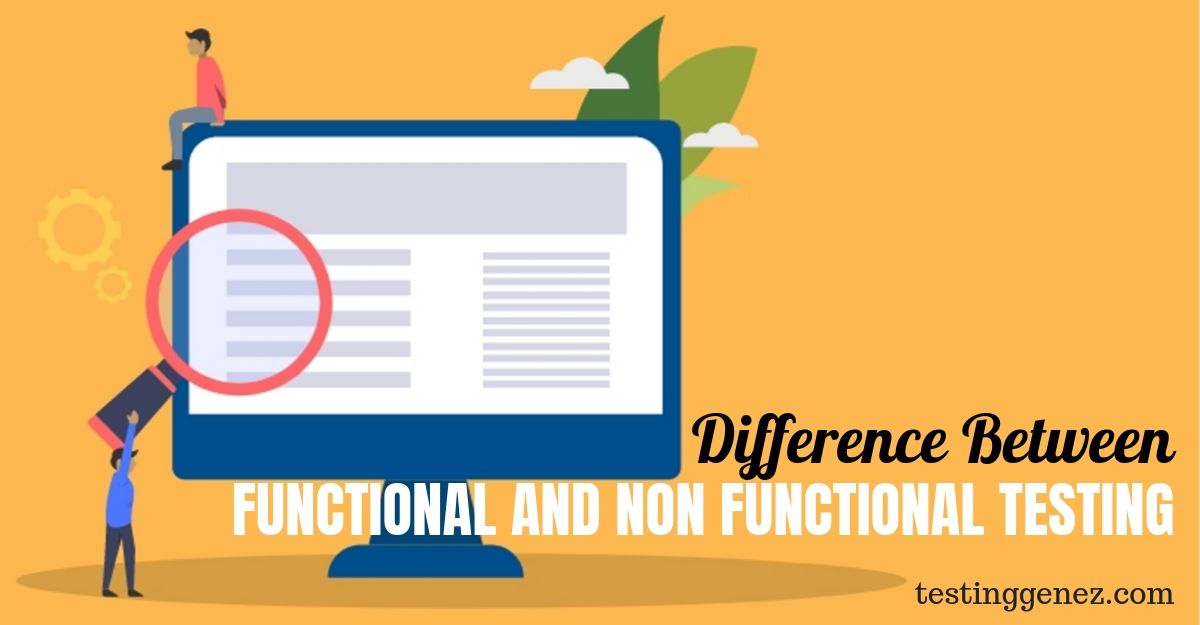
Top 10 Differences between Functional and Non Functional Testing
- App Functionality, benefits of functional testing techniques, difference between functional and non functional testing, Functional Testing, functional testing and non functional testing, functional testing is a verification activity, functional testing techniques, functional testing tools, Functionality testing, QA testing, software functionality testing, Software testing, UI Testing, what is functional testing
- Comparisons
The success of a Web Application doesn’t end with its development. Every Web Application must needs verification. It has to analyze for its working and the purpose. Know the Difference between functional and non functional testing for web apps before starting a project.
To declare an application fit for the market, it undergoes creative and necessary tests. The one popular and must-do test for Web Application is Functional Testing.
The Functional Testing process is the most common testing technique in the market. It is a common technique to test the technical or business requirements. In this blog, we will explore the reasons why Functional Testing in a Web Application is so important and what is functional and nonfunctional testing?

10 Differences Between functional and non functional testing
- UI Testing of the App
- All-Rounder Testing
- Time Consumption
- Efficiency
- Validation of Input Forms
- Validates HTML/CSS
- Database Testing
- Cookie Testing
- Link Testing
- Ensures Security
10 Differences between functional testing and non functional testing
1] UI testing of the app
First and foremost, the business workflow of every application differs. Therefore, it is commonly known as the need and specifications. A tester creates the QA process to incorporate testing of every design detail.
In functional and non functional testing, the UI testing tests the fonts, style, and content of the Web application. It tests through various scenarios and test cases.
2] All-rounder Testing
Functional Testing in both whitebox and blackbox is commonly known as an all-rounder testing process. The reason being it covers most of the app functionalities in the first go. Web app inculcates major functionalities and Functional Testing.
It is popular as the best testing process in terms of testing the length and breadth of the Web App.

3] Time consumption
As we speak of the coverage Functional Testing provides through its test cases. Functional testers also admire the time taken to perform it. Functional testing takes place manually on every functionality.
Moreover, every manual testing automated with test cases and plans. And Functional testing, being a vast process is automated with Functional Testing tools.
4] Efficiency
Time and over again Functional Testing has proved itself as an efficient testing technique. Testers have witnessed that Functional Testing can help detect bugs faster and better in terms of design. Database, Usability, Integration, and all of them according to the requirement.
5] Validation of input forms
Input forms are a common way of giving access to users and to let them use the services on the website. Input forms take data or information. So, testers must ensure form functionality in web applications.
The error, dropdown messages, wrong input and each sign-up step must be ignored while testing the behaviour of the form on every page.

6] Validates HTML/CSS
A web application can run flawlessly with the right HTML structure. Accompanied by optimized CSS and smooth XPath. Functional Testing validates the search engines for HTML syntax errors. And this testing process is undertaken by the standards of W3C practices.
7] Database Testing
The database is on a constant roll when a user starts using a web application. Ensure that the Database provides with right information while retrieving and sending data. Functional Testers have to test the Database of the Web Application. Database Testing tests data integrity by performing various tasks.
Tasks include editing, deleting, and modifying the Database related functionality. And if the database doesn’t respond well, the tester must make sure a proper access denial message.
8] Cookie Testing
Web applications use small files to usually store a user’s login details. These files are cookies and help the user for hassle-free login every time the user logs in.
A Functional Tester tests the expiry of session cookies by disabling and enabling them. A cookie encrypts, expires after a certain time, and a tester verifies it is functioning that way.
9] Link Testing
A web app contains several links on its page. Check the relevance and connectivity of each link are mandatory. And considered as a sign of client responsibility. A tester must ensure the functioning of every Internal link, external links, mail links, and broken links.
10] Ensures Security
Functional testing caps Security in its testing process. The recent events of security breaching have proved that sensitive information must be protected. In Security Testing, unauthorized access stopped by detecting all the loopholes in the Web app.
Security Testing uncovers bugs or flaws in the app. It uncovers through techniques like SQL injection, Privilege Escalation, URL manipulation, Cross-site scripting, and Vulnerable scanning.

Conclusion
At Testing Genez, we value Functional Testing and give utmost attention while performing the tests. Our reason being, performing Functional Testing at the beginning of the web app testing detects several flaws in a single cycle.
The actual difference between functional and non functional testing helps you understand the features. Functional Testing holds importance in Web Application Testing. It exploits and evaluates every individual functionality mentioned in the requirements documents.




